Through October 23rd, Luna Anais Gallery at Tin Flats offers a deeply involving exhibit by Amanda Maciel Antunes, Ithaca, the artist’s first solo show in Los Angeles.

Antunes’ mixed media works are, as always, fascinating puzzle pieces, whether she is using acrylic and ink on canvas or faux leather with acrylic to shape a more dimensional work of wall art. There is poetry on handmade paper, held together with safety pins, thread, dye, and ink, and works that utilize cotton and thread, natural dye, and seeds.
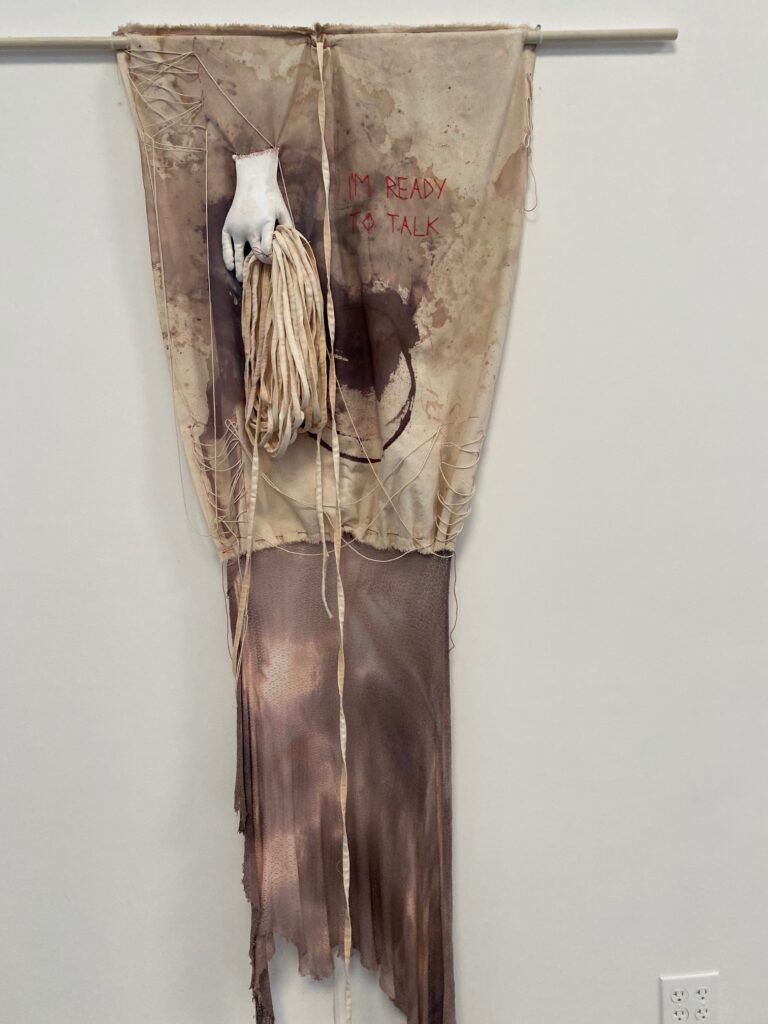
One of the most resonant works in this richly rewarding exhibition is a sculpture that takes its place in the center of the gallery. “Her Vessel” is comprised of bamboo, rope, muslin and other fabric, dye, palm tree branches, and Pochote cotton with fiber-fill.

Each of the materials Antunes uses here are either found or foraged. The cotton was harvested by her. Words are written in thread across the garment draping work, “resting, ships, stars, Homer, hero, muse…” among others. They record the first stanza of Antunes’ own poetry, taken from the writing that thematically anchors the exhibition and bears the same title, Ithaca.
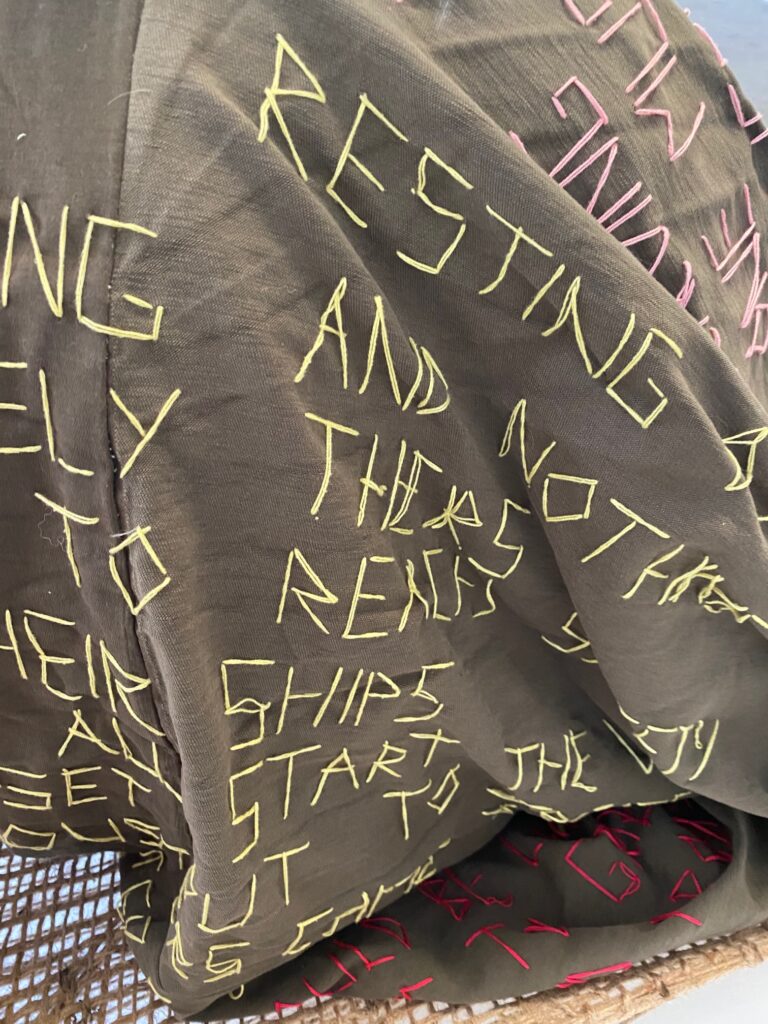
Like each of the works here, this sculptural work has a visceral textural approach. The work calls to viewers in such a way that physical touch becomes emotional – you can almost feel the work. The fabric draped around it is a section of a larger fabric that Antunes created in a daily practice during the quarantine portion of the pandemic. She would hike to the top of Mount Wilson, where she would sew one line of text each day, unspooling the material in a kind of poetic carpet across the dusty trail she climbed.
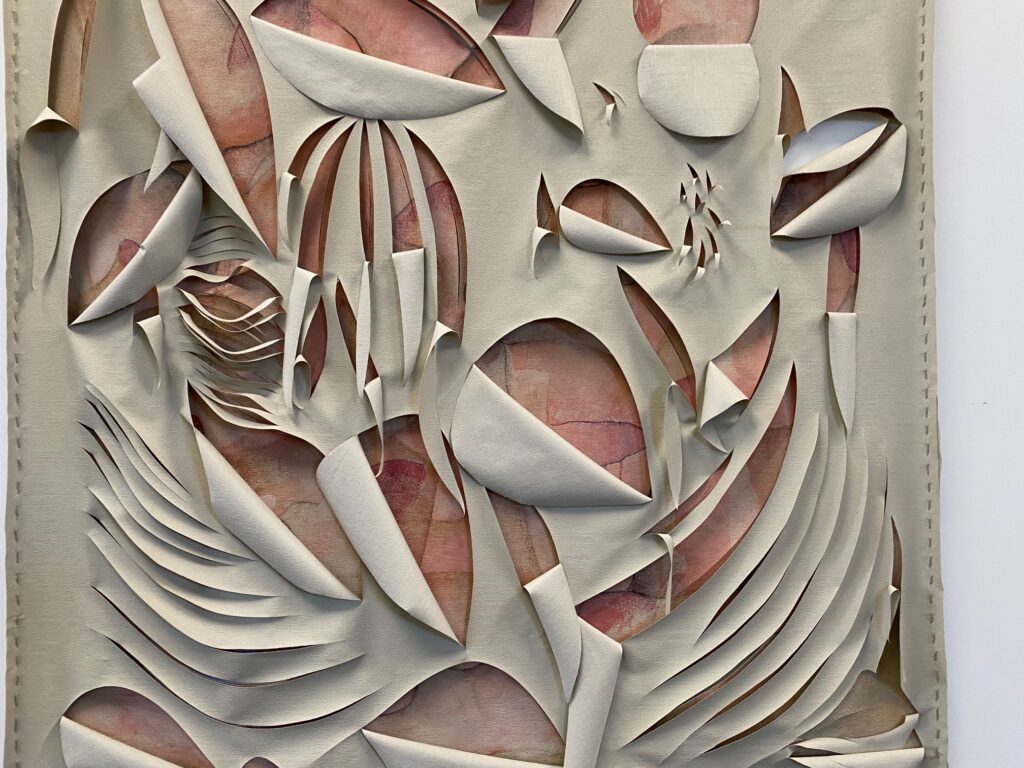
In works such as “I Have to Tell You This” and “I Prefer Truths That Carry No Prophecies,” Antunes overlays her canvasses with imitation leather that she has cut into geometric patterns. This technique provides only with the tantalizing ability peer in and glimpse the work beneath this layer, adding complexity that invokes the elliptical quality of understanding and memory, and the difficulty in finding a true map or compass to represent one’s personal journey.
Contained in clear cases, Antunes also exhibits two dimensional Pochote cotton works, the material for which is also hand-harvested, “Specimen I” and “Specimen II,” which appear like artifacts from a lost time.
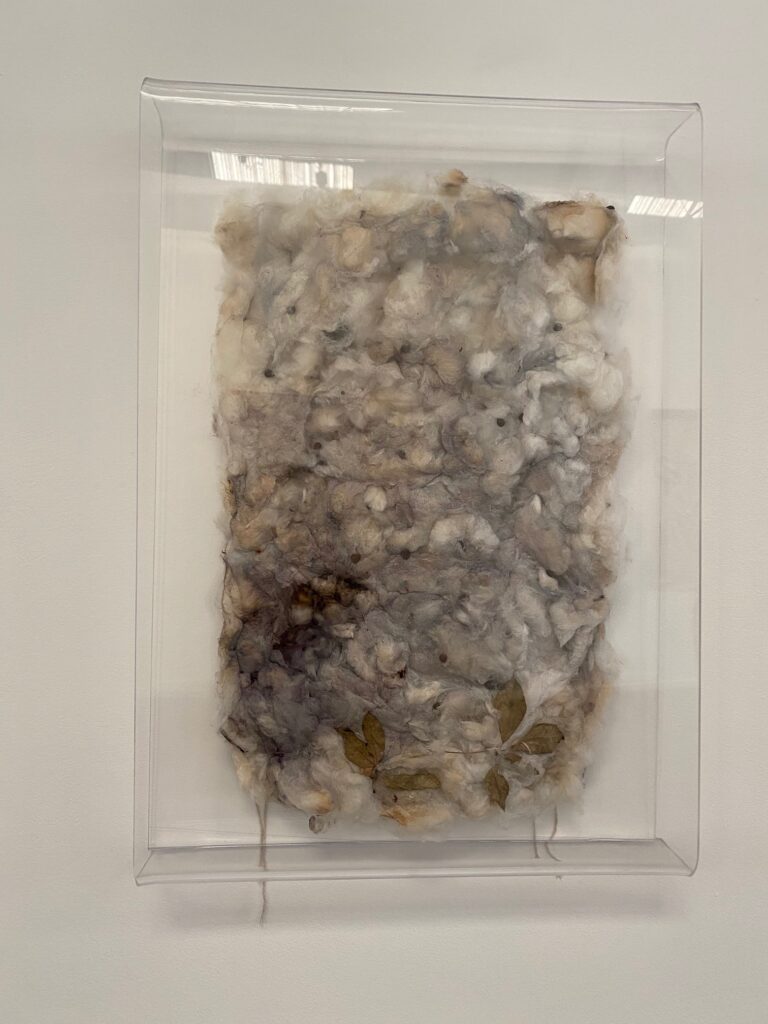
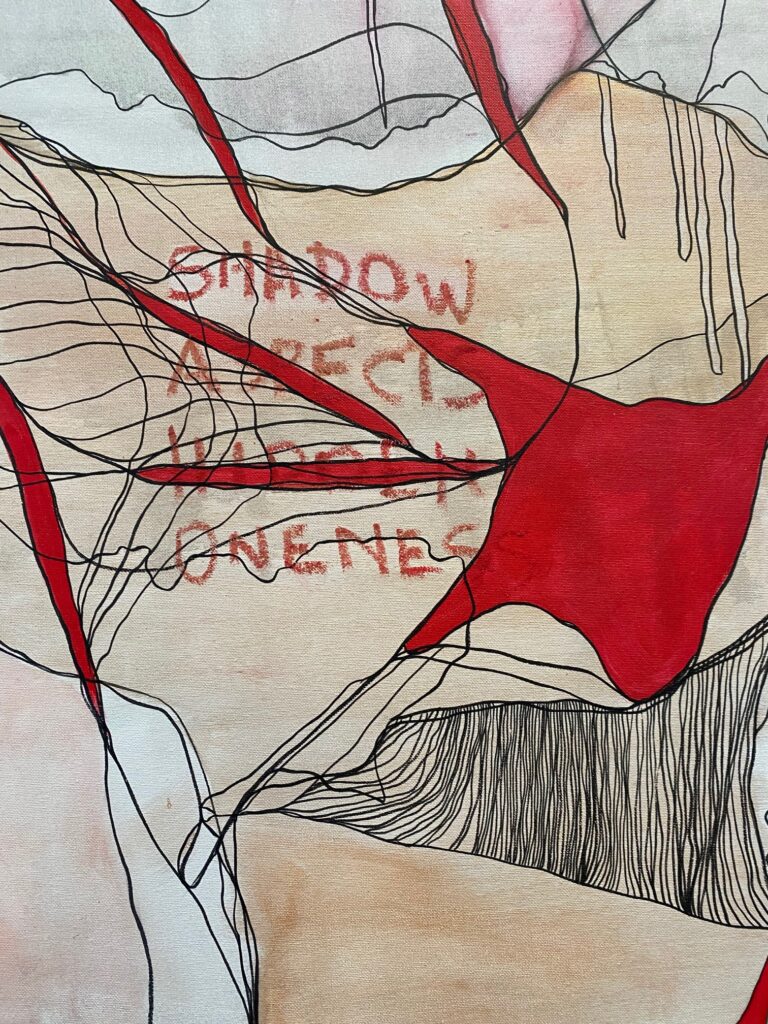
Along with its intensely tactile quality, Ithaca also unfolds as a kind of song. Her poetry draws viewers into its rhythmic music, but so too does the lacy, thread-like patterns of her largest paintings, such as that of “Restless Spirits” and “Circe’s Island.” In these works, the ink lines serve as a representation for the artist’s use of thread in her paper works and sculpture.
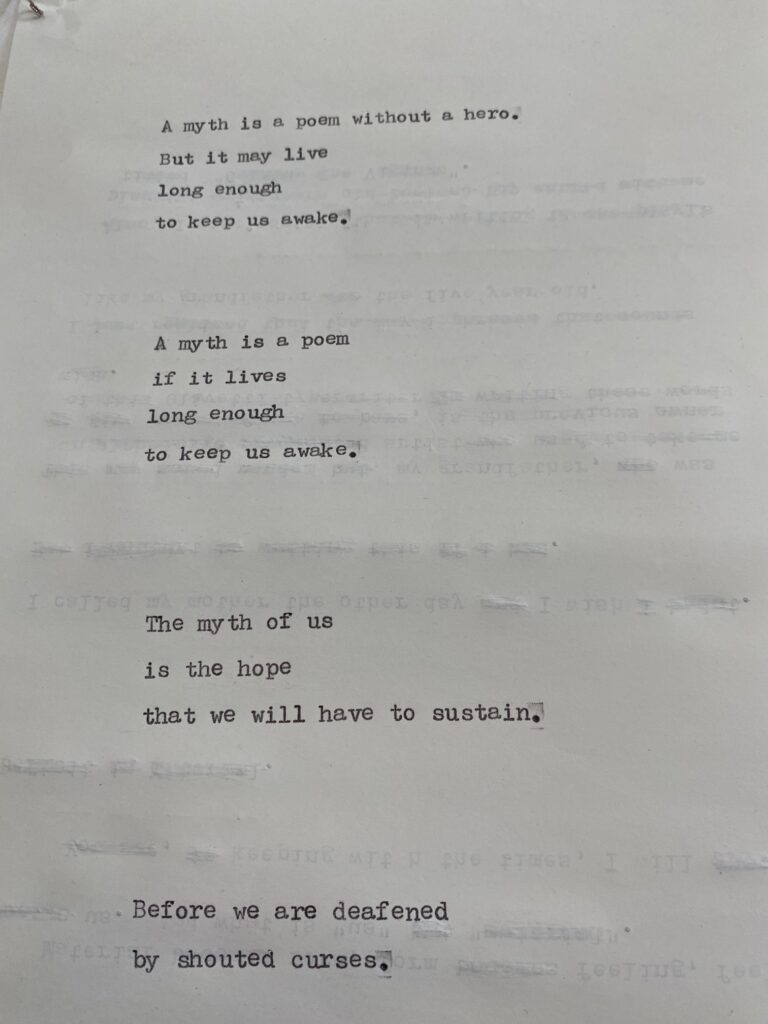
The paper works in this exhibition, “Songs of a Poet I, II, and III” are delicate, almost ephemeral. They are reminiscent of poetic love letters to an alternate reality, to a strange and sweet but distant past. The fact that the works use handmade, roughly held together paper adds to a palpable sense of found treasure, a relic in an attic, a mystery both musty and precious.
Antunes writes “I sat on the edge of something/the grounds beneath my feet dismantle…” setting the viewer up for an experience which has the quality of a dream. In another work, she writes “The myth of us is the hope that we will have to sustain.”

And in the poem Antunes writes to encompass the exhibition, “Ithaca,” she says “What if Ithaca had already been there/But was denied its presence/For a very long time.”

Deny it no longer – Antunes has created a world both fragile and strong, her own epic visual poem as well as a tribute to Homer’s Odyssey, including recent takes on the work such as Emily Wilson’s 2018 translation of the epic poem and C.P. Cavafy’s poem “Ithaka.” Her poetry and visual art are a response to these, and a continuation of the original work. Its name is that of the island that served as Odysseus’ destination, pictured here as a space that is matriarchal in nature, or as Antunes’ writes, “What if Homer was a woman/What if the hero of the tale/was the muse.”
Originally from Brazil, the Los Angeles-based artist often reflects on her own journey in her work, translating it into a universal recognition of everyone’s inward and outward travels, as well as the intersection in which they both merge.
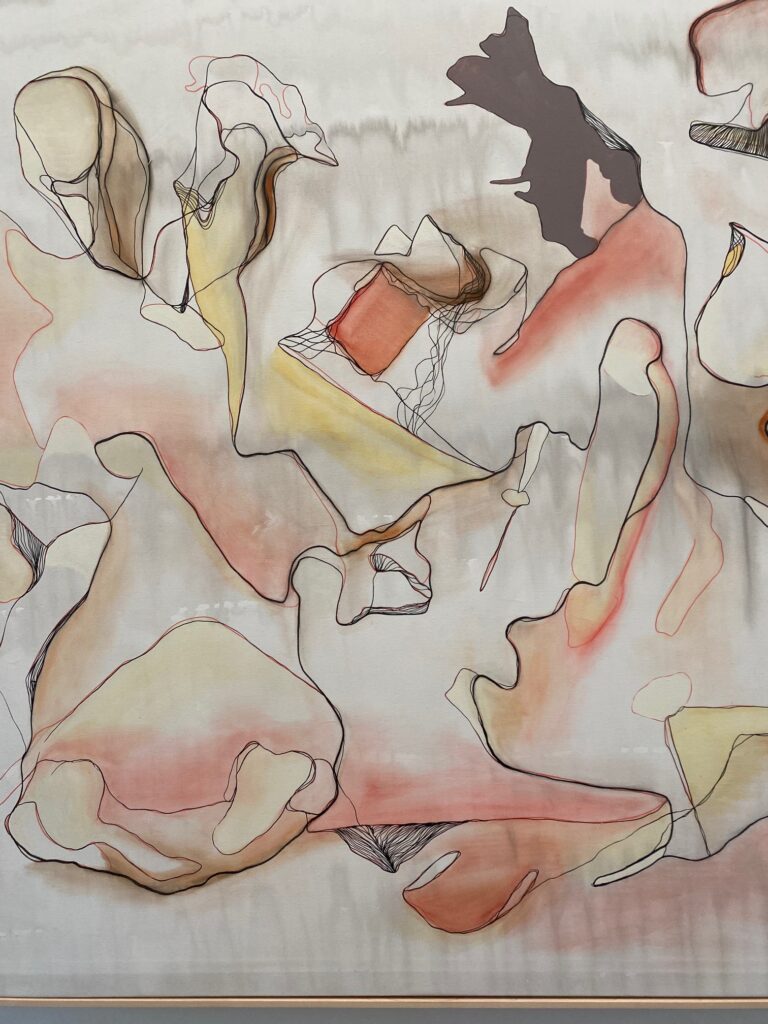
In Ithaca, the two are beautifully fused, encompassing a sense of place, and both a desire of entrenchment and a corresponding but opposite sense of restlessness, the aching need to move on, and the ephemeral quality of finding what could, would, or should be “home.”
Interestingly, Antunes’ epic version of Homer is the second fine exhibition I’ve viewed this year relating to the Odyssey. In June, I viewed Heather Lowe’s spectacular lenticular exhibition at Keystone Gallery, It’s all L.A. to me…ruminations on the Odyssey which envisioned aspects of Los Angeles life through the lens of the epic poem.
Perhaps both profoundly lovely exhibitions are influenced by the journey we have all been on since the pandemic upended – and continues to alter – our lives. And perhaps, as Antunes suggests, we should reinvent ourselves to survive the upheaval, and reconfigure our view of the world, its myths, legends, purpose, and beauty. Certainly, Antunes has done so through the artist’s rivetingly portrayed personal experience and the words of a poet.
- Genie Davis; photos: Genie Davis
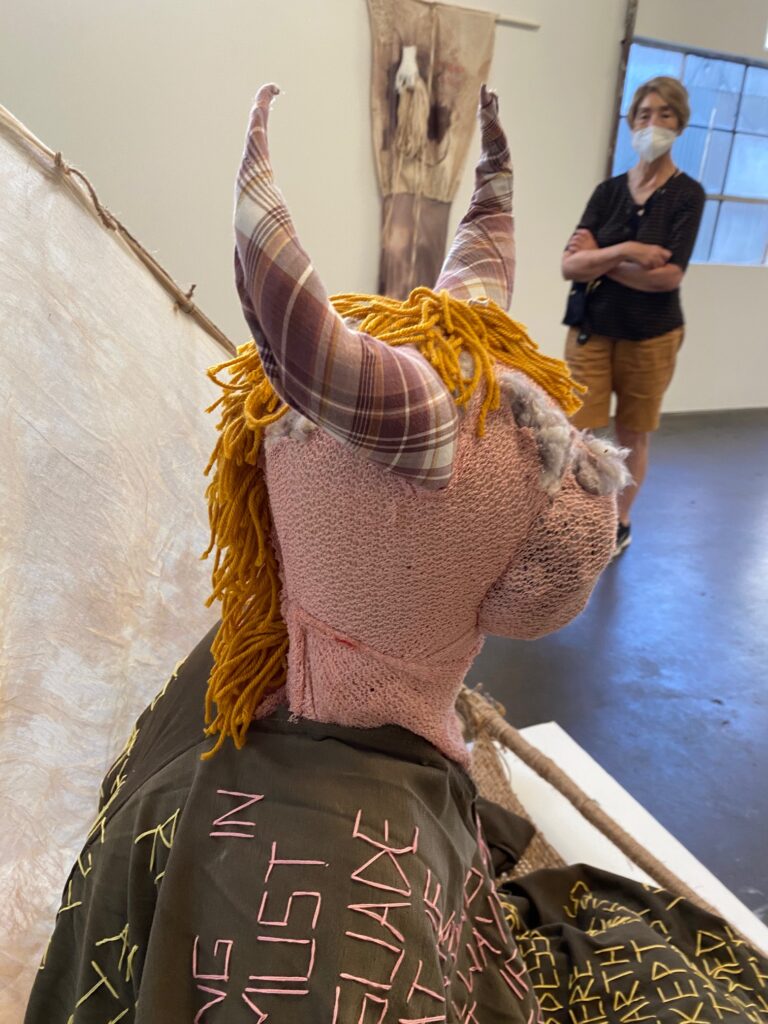



A creative body of work, thanx for the write up.